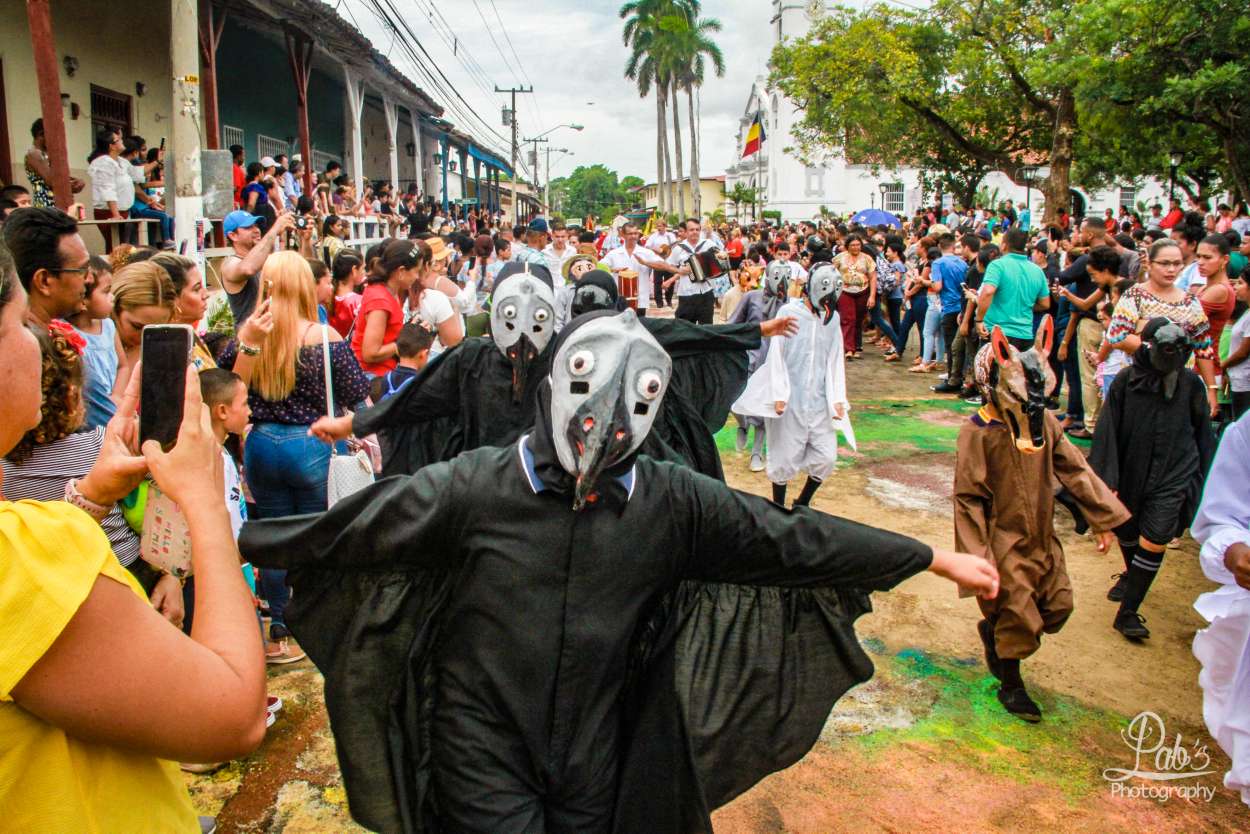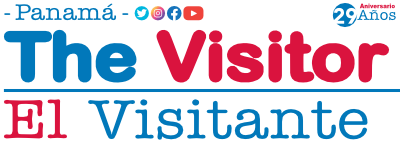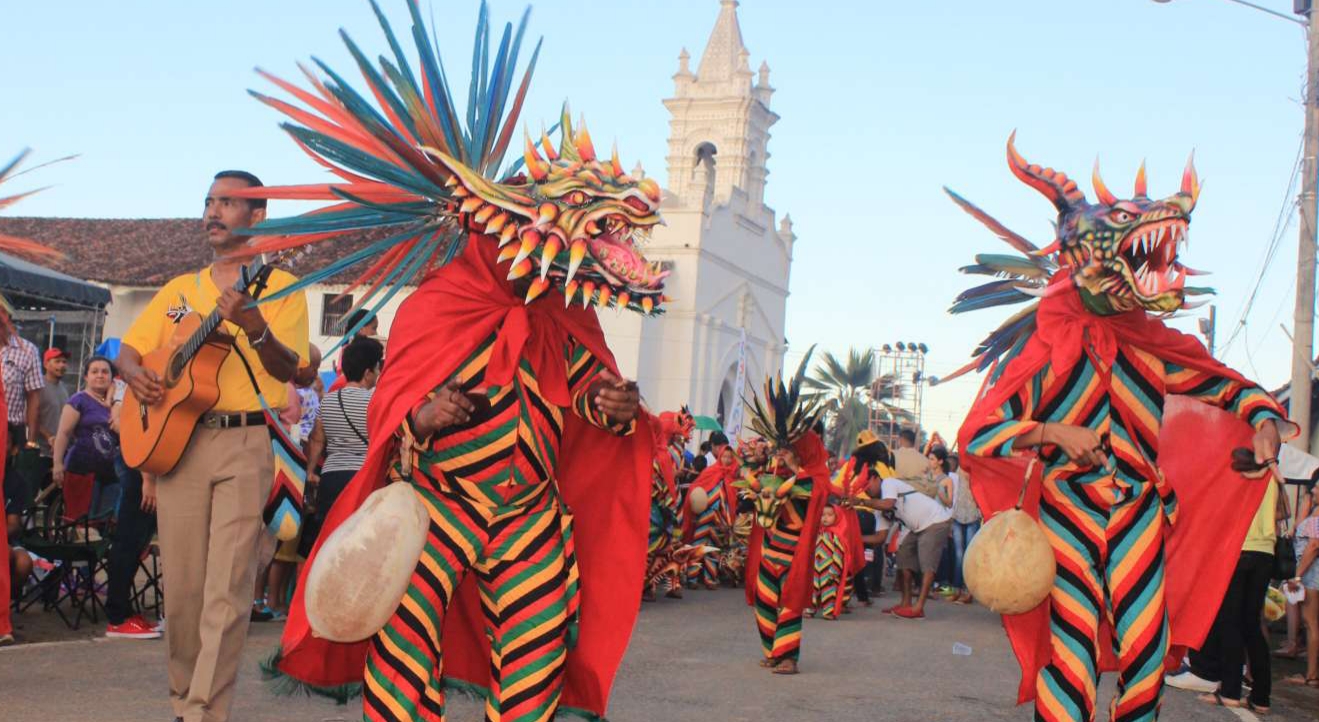Folklore is the series of traditional, anonymous and popularized manifestations that are transmitted orally from generation to generation, and that take place within a region.
In this province those related to community progress have stood out, such as tiles, carts, mud boards, typical foods and sweets and; In the musical art, without a doubt, the tambourines of La Arena and Monagrillo stand out, the sound of the mejoranera, the decimas and of course, the folkloric dances of which the history, meaning and striking clothing stand out. Herrera is filled with colonial towns, that have adopted several dances that are of cultural importance to the Azuero region and all of Panama.
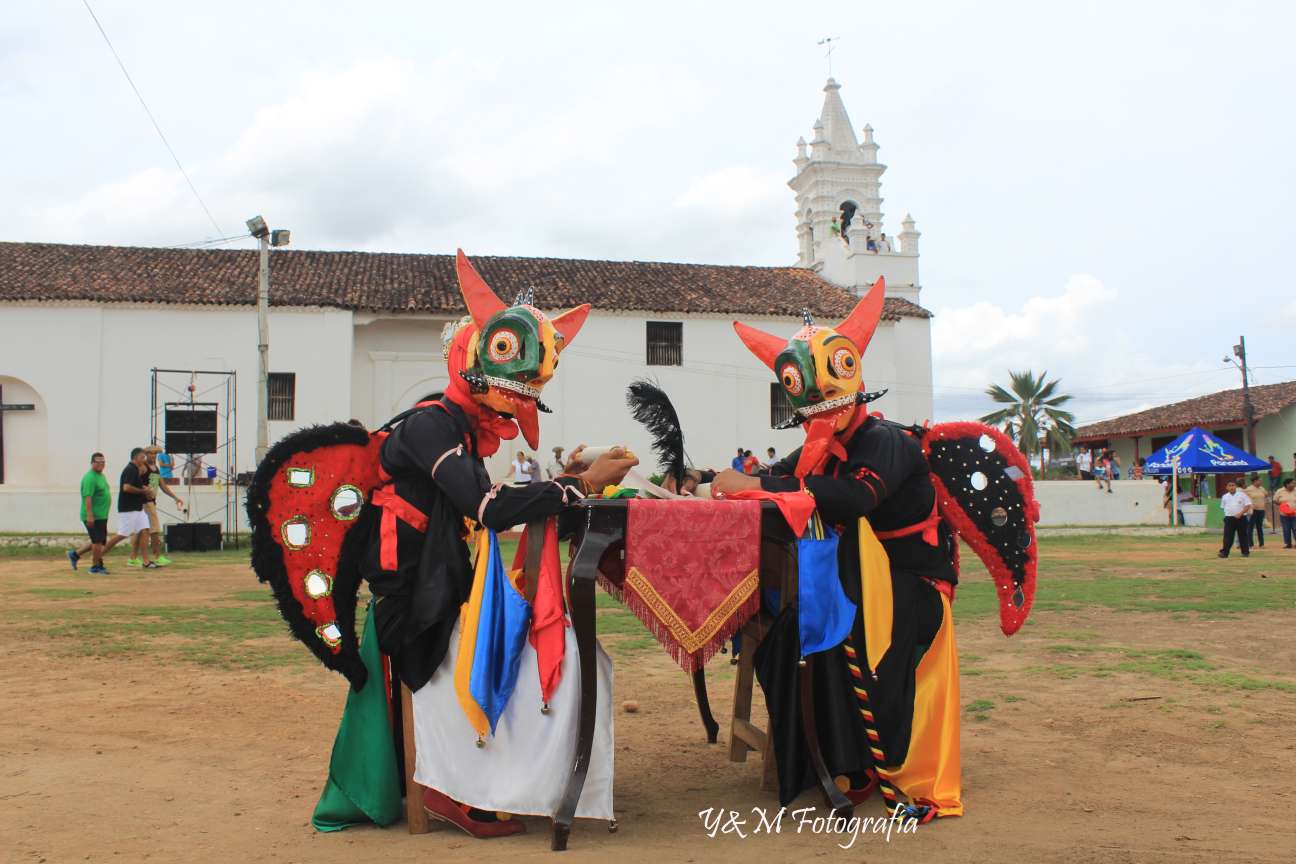
Danza de Diablicos Limpios (Clean Devils Dance)
This dance was born in the small colonial town of Parita, is the most traditional dance of the Corpus Christi festival. It is made up of various hierarchies, one of the main characters being the Greater Devil, who stands out in rank due to his luxurious clothing. It is followed by the Angel, who is the second character that originally represents the Archangel Saint Michael vehemently defending the soul, represented by a child with a veil that covers his face. Then there’s the Captain Devil, who has some input into the central dialogue. Other characters are La Diabla, who is the only humorous character in the dance; finally there are the Diablicos Guias (devil guides) located at the head of the two rows of Diablicos Rasos, who play an important role in the scene called La Torre.
The dance represents the fight between good and evil where the soul initially asks Saint Michael and the Virgin Mary for help and, the Greater Devil accuses the soul of the sins committed on earth. For each accusation, the Angel defends it, upsetting the Devil with it. Then the Angel invites the Devil to make a gallows for the soul, actually being the construction of the cross. With the soul holding the cross in his hand, the Devil is powerless to take it to hell and invites the Angel to a tower for a symbolic battle.
Finally, the Archangel Saint Michael introduces the sword to the Devil, thus ending the religious part of the dance. Subsequently, there is a jocular dance between the Diablo Mayor and the Diabla, ending with the farewell of the Diablo Mayor.
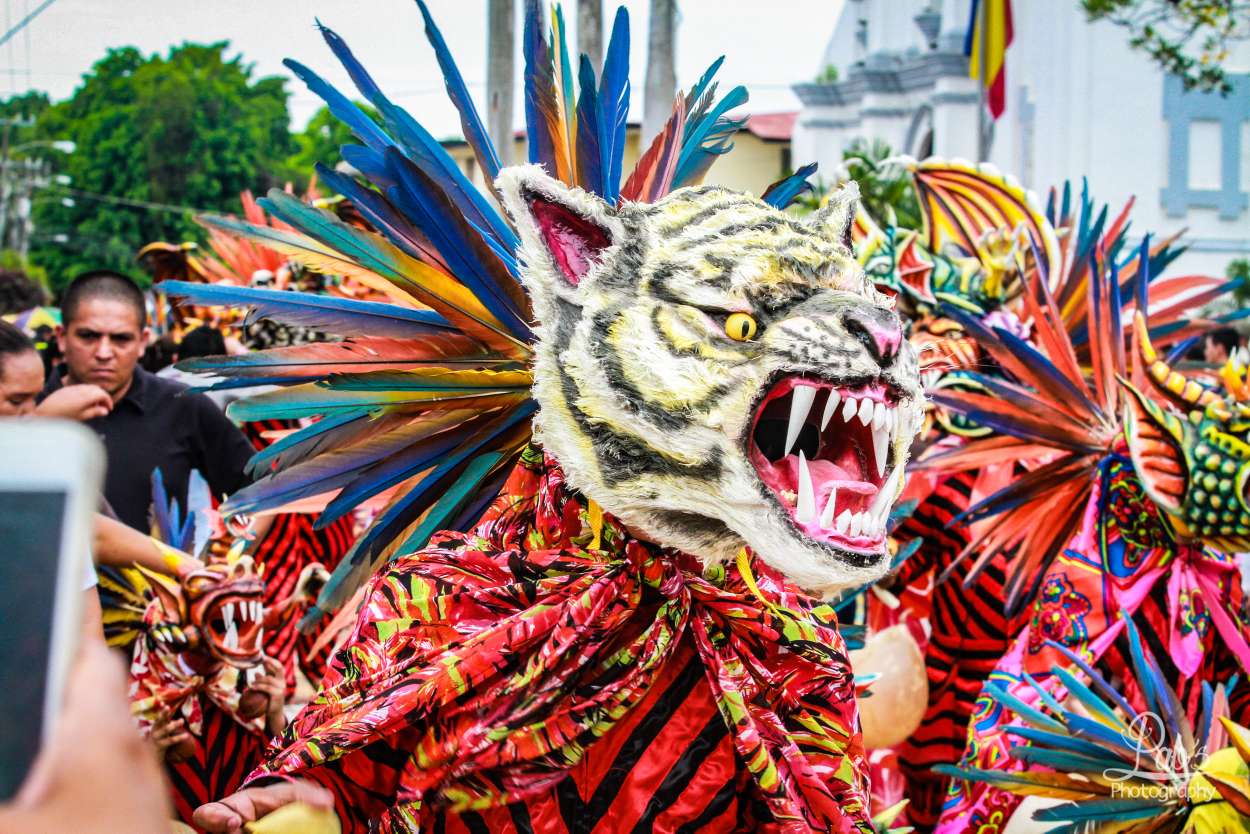
Danza de Diablicos Sucios (Dirty Devils Dance)
This dance that has a lot of relevance in Parita has a huge difference between this dance and the previous one. First, because this dance owes its name to the historical fact that, prior to the 1930s, the dress or “fustillo” was made from a dirty blanket and the red lines were traced with achiote and red mud. The black lines were striped with burnt corn gopher. As a result, the typical red and black listing came out. Given the hectic nature of the dance, it would get wet with the devil’s sweat, leaving them with a very unpleasant or “dirty” appearance. Starting in the year 1934, a tailor from Sandy made a new dress based on silk or satin ribbons originally used to make ties, thus deriving the current name of “ribbon fustillo”. Recently, fabrics of this color have been printed, greatly facilitating the making of the dress.
Another notable difference is that the Diablico Sucio uses a “murion” with macaw feathers, while the Diablo Mayor of the previous dance wears a luxurious crown with mirrors and skirt flowers.
This dance has several dances: wings, screw, chains, couples, towers, point of the Devil and “solo” of the Greater Devil. Without a doubt, the Diablicos Limpios dance is one of the most complex and colorful.

Danza del Torito Guapo (Dance of the Handsome Bull)
This traditional dance is about the main character with the name of “La Dueña”, who had a very brave bull on her farm.
Having lost her husband named Joaquin and with a child named Joaquincito (represented by a rag doll). The owner is pregnant from the Mayoral and the Toro Guapo knows it, then being captured because of it. Already in the square, the mayoral goes out to fight the Handsome Bull (Torito Guapo), but it recognizes the Mayoral, goring him strongly. Seeing this, “La Dueña” comes out screaming and looks for a maiden woman to urinate on the mayoral in order to be saved. At the end of the dance, everyone dances happily and sings some shanties and couplets of love, boastfulness or jokes. The dance of the Torito Guapo de La Arena is presented on the day of San Pablo, San Juan Bautista, Las Mercedes and other folkloric festivities.
Parrampanes Dance
The name of this dance comes from the word “parran”, which according to the Dictionary of the Royal Academy of Language in the 1930s edition, means puppet or village clown. The dance of parrampanes is traditionally recognized as the most festive and humorous of the Corpus Christi or San Juan Bautista festivities.
Because there is a Papal mandate from the 17th century that prohibits the participation of women in pagan-religious festivals, they have been replaced by men since then. For this reason, the female characters are men in disguise. A historical fact to highlight is that in the past the parrampanes spoke and did not have accordion music accompaniment as is currently the case. The characters generally represented various professionals or craftsmen, such as: sailors, doctors, fishermen, lawyers, musicians, etc. This dance is a satire to the society in which one lives.
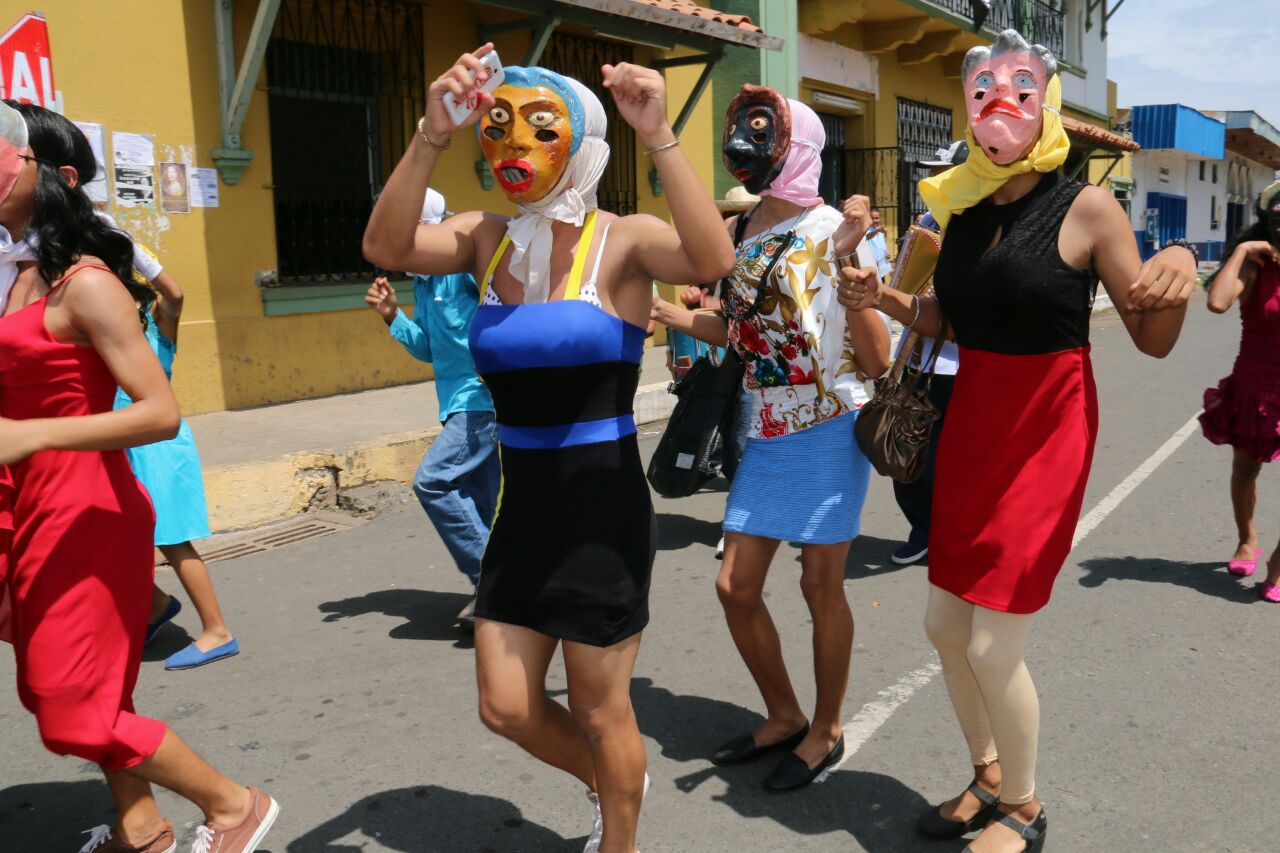
Dance of the Indians
There is no historical record of the existence of this dance prior to the 1950s; therefore, it is considered a manifestation of folklore from the nascent Arena. It consists of the dance of
people dressed up as Native Americans; dancing to the sound of a harmonica and a snare drum. The choreographic figures that dance are similar to those of the Dirty or Clean Diablico. It has been observed that they sometimes introduce a person from the audience to the dance.
“Death”
This character has had a place among the people from Chitre only in recent years. Although it is true that these masked men are not accompanied by any music, they have become very popular due to the particularity of using a hook or doodle to jokingly pull the legs of people who fear them. We could affirm that this character is a variation of the old silent parrampan that also existed in the folklore of Chitre.
“La Muerte” existed in the 60s in Chitre, always mounted on a horse slowly wandering the streets with a huge scythe.
There are several dances that by tradition have brightened the folkloric festivities of Herrera. For this reason, it is vital to keep, encourage and promote this folk dances. It is a mission that involves popular artists, however, it is vital that the educational system introduce them through teaching in the educational establishments of the district.
